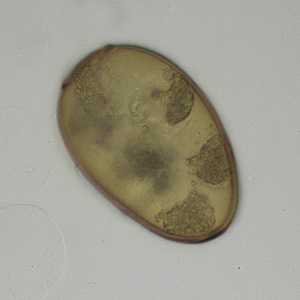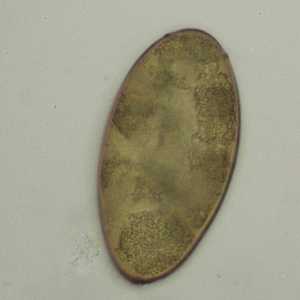
Case #348 - May, 2013
A 24-year-old refugee from Thailand was being treated for tuberculosis by a local health department. Sputum specimens were collected at regular intervals to monitor the treatment progress. Interesting objects (Figures A and B) were observed in a digested sputum specimen collected approximately six months after arrival in the U.S. The objects were seen in low numbers and measured on average 100 micrometers long by 60 micrometers wide. Images of the objects were captured and sent to the DPDx Team for diagnostic assistance. What is your diagnosis? Based on what criteria?

Figure A

Figure B
Case Answer
This was a case of paragonimiasis caused by a lung fluke in the genus Paragonimus. Diagnostic morphologic features included:
- unembryonated, operculate eggs within the size range for Paragonimus spp. that are wider near the anterior (opercular) end.
- eggs with visible opercular ‘shoulders', a thick shell, and a thickened abopercular end.
Although the precise species cannot be determined from egg morphology alone, the patient's country of origin suggests this infection may have been caused by P. westermani. Infection occurs from the ingestion of undercooked freshwater crabs. In North America, humans can become infected with the endemic P. kellicotti after ingestion of undercooked crayfish.
More on: Paragonimiasi
This case and images were kindly provided by the Kentucky Department of Health, State Health Laboratory.
Images presented in the monthly case studies are from specimens submitted for diagnosis or archiving. On rare occasions, clinical histories given may be partly fictitious.
DPDx is an education resource designed for health professionals and laboratory scientists. For an overview including prevention and control visit www.cdc.gov/parasites/.
- Page last reviewed: August 24, 2016
- Page last updated: August 24, 2016
- Content source:
- Global Health – Division of Parasitic Diseases and Malaria
- Notice: Linking to a non-federal site does not constitute an endorsement by HHS, CDC or any of its employees of the sponsors or the information and products presented on the site.
- Maintained By:


 ShareCompartir
ShareCompartir